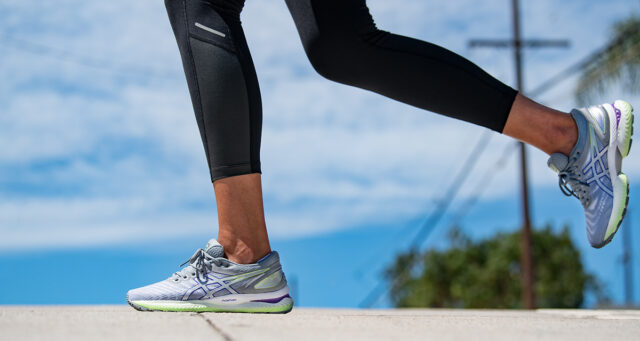Just about every runner has heard about the IT band, but not everyone understands it. Usually, runners know about it because they’ve developed nagging knee pain and are told that they should foam roll their IT band. But what exactly is going on when this happens?
The IT Band is a band of thickened fibrous connective tissue that extends from the muscles in and around the hip down towards the bottom of the outer knee. It spans the whole side of the thigh and plays a major role in stabilizing your knee—which is why it can be so irritating when it acts up.
This enigmatic band of tissue often acts up when there is weakness or instability in another part of the body. Pain can develop along the band or at one of its attachment sites, usually at the outer part of the knee. It develops after repeated flexion and extension of the knee during activities such as running or cycling.
Often pain develops due to a chain reaction of dysfunction. When there is weakness in the hips (or the gluteus medius), this can lead to the knees moving inward during single-leg loading, which occurs with every stride in running. The repeated bending and straightening of the knee combined with that inward movement that occurs when there is weakness in the hip or ankle can contribute to repeated friction where the IT band meets the lower leg. Imagine taking a taut rope that is compressed against a surface and having it bump across a small bony prominence over and over again. It’s no wonder the IT band becomes so, literally, irritating.
So what can you do?
Contrary to popular belief, you can’t actually stretch this band of fascia, but you can stretch the surrounding musculature. Try stretching the hamstrings, quadriceps, and hips to make sure mobility isn’t limited at any of these joints.
Then you’ll want to strengthen your hips. Try some gluteus medius strengthening exercises such as resisted lateral walking, standing resisted hip abduction with a band around the ankles, and side-lying hip abduction.
Lastly, make sure you have the right shoes for you. Your sneakers should provide enough support and ankle stability that when you balance on one leg you don’t see your knee rotating inward and ankle wobbling uncontrollably if you’re on a slightly unstable surface. Ankle strength and stability should come primarily from your own muscles, but the right footwear can help.
Lastly, while the research is mixed on the effectiveness of foam rolling, most runners find it super helpful and painfully satisfying in its own way. Give these things a try, and if your runs are still painful, you may want to see a specialist.
Read more:
Please note: This blog is not intended to be a substitute for professional medical advice, diagnosis, or treatment. Always seek the advice of your physician or other qualified health provider with any questions you may have regarding a medical condition






